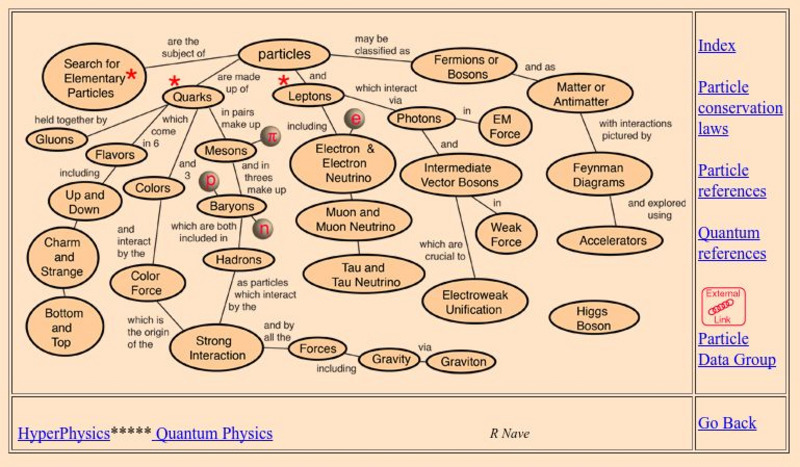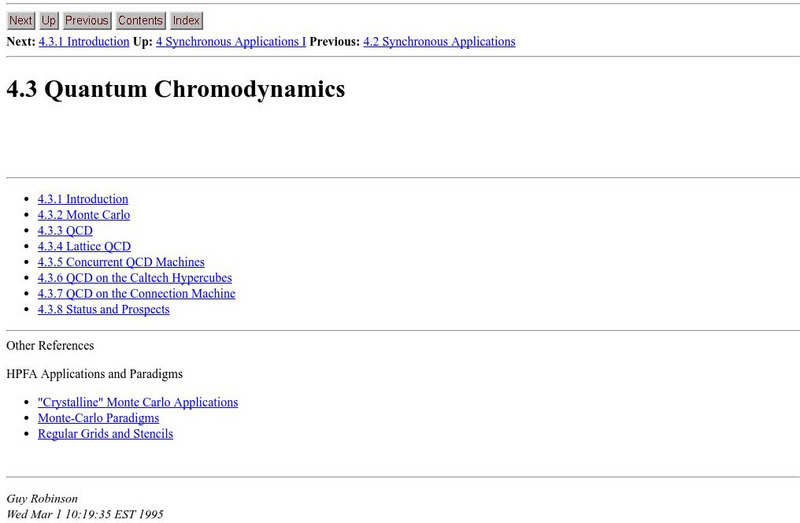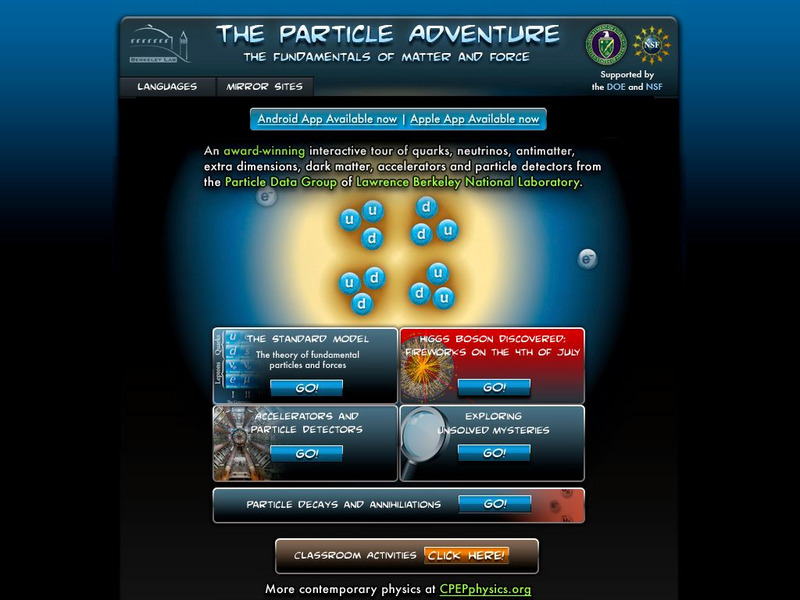Georgia State University
Georgia State University: Hyper Physics: Particles
This is a very detailed site containing information on several sub-atomic particles including the Hadron.
Lawrence Berkeley National Laboratory
Berkeley Lab: Particle Adventure: Matter and Antimatter
The beginning of an informative tutorial on antimatter, covering quarks, hadrons, baryons, mesons, leptons, and neutrinos.
Other
Netlib: 4.3 Quantum Chromodynamics
An online textbook containing an introduction to quantum chromodynamics (QCD). This is a proposed theory about what causes quarks and gluons to form hadrons. Article contains a description of lattice QCD, an approximation to QCD that is...
Lawrence Berkeley National Laboratory
Berkeley Lab: The Particle Adventure
Visit this site for an interactive tour of the atom and all aspects of particle physics. View the animations available with almost every description on this site. A great place for the fundamentals of particles and forces including a...
Georgia State University
Georgia State University: Hyper Physics: Hadrons
This site defines hadrons and their characteristics. There are links to explanations and more detailed information about interactions and composition.
Lawrence Berkeley National Laboratory
Berkeley Lab: La Aventura De Las Particulas
Learn the fundamentals of particles and forces with this site. Explore the paths that explain matter in the universe.
Lawrence Berkeley National Laboratory
Berkeley Lab: Particle Adventure: Hadrons, Baryons, and Mesons
This article, part of a particle physics tutorial site, explains and illustrates three kinds of quarks: hadrons, baryons, and mesons.
Other
Stony Brook Center for Nuclear Theory: Nuclear Theory Group
This site describes the ongoing work by the Stony Brook Center for Nuclear Theory in the field of Quantum Chromodynamics, and gives a brief definition of this concept. The site has a link to the webpage of the primary research scientist.









